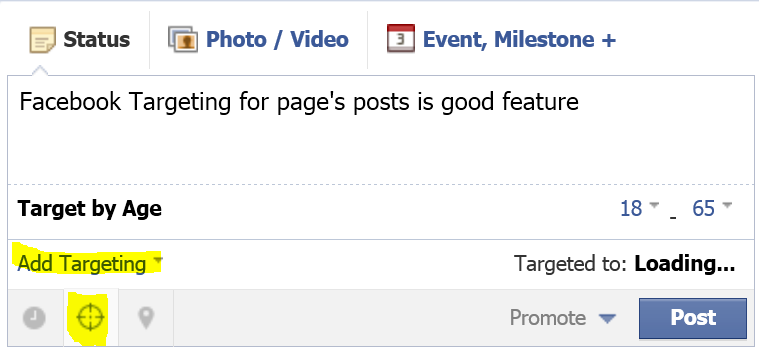Remember when your news feed just showed you updates from friends and maybe a few pages you followed? Simple times, right? Then came personalization – showing you more of what you clicked on, liked, or commented on. But what’s unfolding now is something else entirely. We’re moving beyond mere personalization into the era of hyper-targeting, where algorithms don’t just guess what you like, they predict exactly what will grab your attention, minute by minute, scroll by scroll.
It’s a sophisticated dance between you, the content, and complex artificial intelligence. The ultimate goal is compellingly simple: maximum relevance, minimum noise. Imagine opening your feed and theoretically seeing *only* what holds your interest, what resonates with your existing views, or what the system believes will make you engage. On the surface, it sounds incredibly efficient.
But this level of algorithmic precision brings significant questions into sharp focus. Are we just optimizing for engagement, or are we inadvertently constructing deeper, more impenetrable filter bubbles? Are we seeing the world, or just seeing echoes of our own beliefs reflected back at us, curated by code?
Understanding the mechanics behind these hyper-targeted systems is no longer optional; it’s a necessary step towards reclaiming a degree of control over the information that shapes your perception of the world. In the age where your feed is tailored down to a T, critical thinking isn’t just a good skill – it’s rapidly becoming your most crucial superpower.
Before we delve into the nuts and bolts of this shift, here’s a quick visual rundown of the core idea we’re exploring:
Table of Contents
What Does Hyper-Targeted Truly Mean?
Hyper-targeting takes traditional personalization and injects it with steroids, powered by advanced AI and machine learning. It’s not just about showing you articles related to topics you follow. It’s about analyzing subtle behavioral cues: how long you pause on an image, the speed of your scroll, the emotional tone of comments you read or write, your location, your device, the time of day, even your recent search history off-platform (in some cases, depending on privacy settings and data sharing). All this data feeds sophisticated algorithms designed to predict your immediate interest with unnerving accuracy.
Think of it as the algorithm building an incredibly detailed psychological profile of you, constantly updated in real-time. This profile isn’t just about your stated interests; it’s about your predicted *interactions*. The system learns what kind of headlines make you click, what style of content keeps you reading, and what triggers an emotional response that leads to engagement. The goal is to keep you scrolling, clicking, and interacting for as long as possible.

The Allure: Maximum Relevance, Minimum Noise
The promise of hyper-targeting is powerful. In a world drowning in information, having a feed that cuts through the noise and presents you with content highly likely to be relevant sounds like a savior. It means less time sifting through irrelevant headlines about topics you couldn’t care less about. For content creators and advertisers, it means reaching the exact audience most likely to be interested in their message, leading to higher engagement rates and better returns.
From a user’s perspective, a hyper-targeted feed can feel incredibly efficient and even validating. It surfaces information on niche interests, connects you with communities aligned with your passions, and generally makes the digital information landscape feel more manageable and tailored specifically for *you*. This high degree of relevance is often framed as a necessary evolution of online information consumption.
The Shadow Side: Deeper Filter Bubbles and Echo Chambers
However, optimizing solely for engagement and relevance to existing interests presents a significant societal challenge. When algorithms prioritize content that aligns with your past behavior and stated or inferred beliefs, they risk creating what Eli Pariser termed ‘filter bubbles.’ Within these bubbles, you are less likely to encounter information, perspectives, or viewpoints that challenge your own. This can lead to an ‘echo chamber effect,’ where your own beliefs are amplified and reinforced by similar voices and information sources presented to you by the algorithm.

The danger here is multifaceted:
- Reduced Exposure to Diverse Ideas: You miss out on crucial context, alternative viewpoints, and news from outside your immediate interests, hindering your ability to form well-rounded opinions.
- Increased Polarization: By constantly showing people content that confirms their biases, algorithms can exacerbate divisions and make it harder for individuals to understand or empathize with those holding different views.
- Difficulty Discerning Fact from Fiction: Within an echo chamber, misinformation or disinformation that aligns with the prevailing narrative can spread rapidly and unchallenged.
- Lack of Serendipity: The accidental discovery of new topics, ideas, or perspectives is significantly reduced when the feed is strictly curated based on predicted past behavior.
While the algorithm aims for maximum relevance, it might be achieving maximum confirmation, potentially at the cost of a truly informed citizenry.
Navigating the Hyper-Targeted World: Your Superpower is Critical Thinking
So, how do you navigate this increasingly hyper-targeted landscape? Giving up online news isn’t realistic for most. The key lies in conscious awareness and the active application of critical thinking.

Here are a few strategies:
- Acknowledge the Algorithm’s Influence: Understand that your feed is not a neutral reflection of the world, but a curated selection based on complex calculations designed to keep you engaged.
- Actively Seek Diverse Sources: Don’t rely on just one or two platforms for your news. Explore different news websites, follow journalists with varying perspectives, and seek out content that you know might challenge your existing views.
- Question Everything: Before accepting information as fact, ask: Who created this content? What is their potential bias? What evidence is presented? Is this story being reported by multiple, reputable sources?
- Break Your Habits: Occasionally interact with content outside your usual sphere. Search for topics you know little about. This can signal to the algorithm that you have broader interests, potentially diversifying your feed slightly.
- Utilize Platform Tools (When Available): Some platforms offer tools to see why something was shown to you or allow you to indicate disinterest in certain topics. Use these features to try and exert some influence.
- Discuss and Debate (Respectfully): Engage with people who hold different opinions. Understanding *why* someone believes what they do, even if you disagree, is crucial for breaking down echo chambers.
Think of the algorithm as a helpful assistant, not an infallible guide. It can show you things you’re likely to find interesting, but it shouldn’t be the sole gatekeeper of the information you consume.
The Road Ahead for Digital Information
The evolution towards hyper-targeted news feeds is likely to continue as AI and data analysis techniques become more sophisticated. This trend will undoubtedly fuel ongoing debates about the responsibility of platforms, potential regulatory measures, and the need for greater transparency in how algorithms curate information.
Ultimately, the future of how we consume news and information online isn’t solely in the hands of the engineers building these systems. It’s also in our hands, the users. By being aware of the forces at play, actively seeking diverse perspectives, and applying rigorous critical thinking, we can navigate the hyper-targeted world more effectively, ensuring that relevance serves to inform us, rather than merely confirm what we already think we know.
Frequently Asked Questions (FAQs)
Q: What’s the main difference between personalized and hyper-targeted news feeds?
A: Personalized feeds use your general preferences and past interactions (likes, shares) to suggest content. Hyper-targeted feeds go much deeper, using advanced AI and machine learning to analyze subtle behavioral cues, demographics, and real-time context to predict your immediate interest and keep you engaged, tailoring the feed down to a very granular level.
Q: Are filter bubbles always a bad thing?
A: While personalization can be convenient for filtering irrelevant content, hyper-targeting deepens filter bubbles by prioritizing content that aligns with existing beliefs. This limits exposure to diverse perspectives, which can hinder informed decision-making and increase polarization. So, while some filtering is helpful, the extreme caused by hyper-targeting is widely seen as detrimental.
Q: How can I tell if an article in my feed is being shown to me because of hyper-targeting?
A: It’s often hard to know exactly why any specific article appears. However, if you consistently see content that strongly aligns with your existing views or interests, and rarely see anything challenging or outside your usual sphere, it’s a strong indicator that algorithms are heavily tailoring your feed based on predicted preferences and biases.
Q: Can I opt-out of hyper-targeted news feeds?
A: Most major platforms use these algorithms as a core part of their service, and there isn’t typically a simple ‘off’ switch for hyper-targeting. However, some platforms allow you to adjust ad preferences, follow/unfollow topics, or use features like ‘Why am I seeing this?’ to get some insight and limited control. The most effective strategy is active user behavior: diversifying your sources off-platform and applying critical thinking to everything you see.
Q: Is critical thinking enough to combat the effects of hyper-targeting?
A: Critical thinking is an essential tool, empowering you to evaluate the information you encounter. However, the scale and sophistication of hyper-targeting mean that individual action needs to be complemented by efforts from platforms (more transparency, better tools for users) and broader digital literacy education to fully address the challenges.






